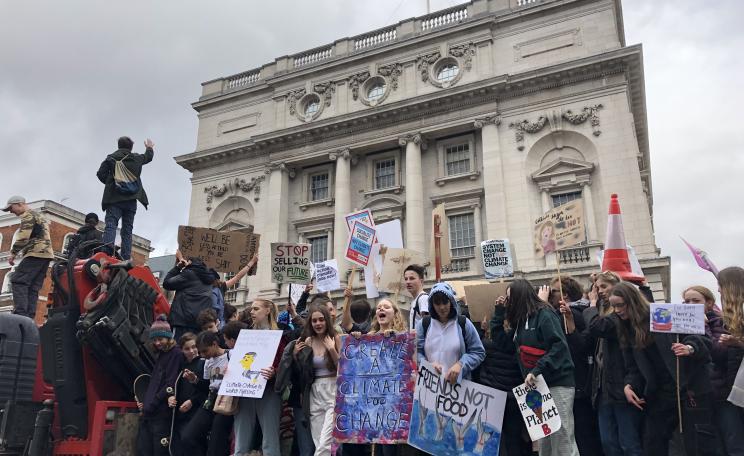-
What is the difference between a system of law based on private ownership of land, and one based on soil as our joint natural heritage?
When the Cambridge branch of Extinction Rebellion thrust their spades into the hallowed lawns of Trinity College, traditionalists all over the country – indeed, all over the world – gasped in collective shock.
From a week of actions, this was the one that caused most disruption: not to traffic flow, but to our very conception of what land is for, and what ownership of land means. Controversial even within the movement, it was a breathtakingly bold action demanding a shift in thinking for planetary repair.
Nature
This was always a lawn with a symbolic history. Belonging to Trinity College, it holds an apple tree grown from a cutting from the original tree said to have inspired Newton to formulate the laws of motion that are the foundation of classical science.
The manicured grass has been kept pristine, and forbidden to all but the invertebrates who conduct their lives below the surface, blithely unaware of any desecration. XR Cambridge dug up the lawn in protest at the hypocrisy behind the search for truth that is at the heart of education.
Trinity College purports to support the University’s “Cambridge Zero” project, calling on the “world’s brightest and best to join us in creating a zero carbon future”. Yet at the same time it invests £9.1 million in oil and gas companies, the most of any of the 45 colleges that make up the Oxford and Cambridge elite educational institutions.
What was most eye-opening about this action was the amount of scorn heaped on the intergenerational activists arrested as a consequence. Much of it was about the alleged idiocy of “destroying nature” by digging up a lawn to highlight the climate crisis.
Such criticism came mostly from anti-environmentalists, but there was also opprobrium from allies within the broader movement who felt the damage to the lawn outweighed any positive impact of awareness-raising that the action could bring.
Elitism
Yet as the shockwaves subsided, the deeper meaning of this almost sacrilegious action began to emerge. The lawn is – was – a statement of the qualities of class and privilege that the College represents.
By disrupting its surface, the activists made clear that this is a rebellion against the elite power at the heart of the institutions that have created the climate and ecological crises.
Taking their shovels to the hallowed grass, the activists weren’t “destroying nature”. They were uprooting human-centred notions of a “tamed nature”: lawns maintained in sterility for the pleasure of displaying control over wild Life. The activists were standing up for a different relationship with nature: a relationship that accedes to her fecund creativity; that respects her need – her demand – to fulfil to her rich and complex life cycles so that all life can thrive.
A commission convened by the World Health Organisation, UNICEF and the Lancet produced a landmark report in the same week that Extinction Rebellion activists took their shovels to the Trinity College lawn. It found that the health and future of every child and adolescent worldwide is under immediate threat from ecological degradation, climate change and exploitative marketing practices.
Also in that week, the BBC broke news of a report by economists at JP Morgan (one of the world’s largest investment banks, with billions invested in fossil fuels) warning its clients that under business as usual, it “cannot rule out catastrophic outcomes where human life as we know it is threatened.”
Interconnection
Business as usual is centred on ownership of land, and an extractive economy. The action by XR Cambridge highlighted not only the educational hypocrisy of Trinity College carrying out business transactions that trash the future of the children it is educating. It stood for the uprooting of the western civilization project the lawn represents: both through its manufactured pristineness, and through the humble tree that represents a decisive moment in history.
The apple that fell on Newton’s head led to the discovery of scientific laws that we’ve exploited to enable our capacities to control, extract and appropriate our living earth’s resources to further human dominance.
An economy based on ownership of land ignores the interconnected ecosystems of soil that support fertility and biodiversity, to the extent that all of life is now threatened.
The fresh soil dug up from the lawn, on bare display at Trinity College, is a symbol for a renewed covenant: for law that respects all forms of life, with our mutual health at its heart.
These Authors
Mothiur Rahman Mothiur Rahman is a non-practising solicitor specialising in public law, planning and governance. He is a co-founder of the Community Chartering Network and is setting up a legal innovation lab called New Economy Law. Gill Coombs is a writer, coach, facilitator and author of The Trembling Warrior – A Guide for Reluctant Activists.
Image: Tom Dorrington.





